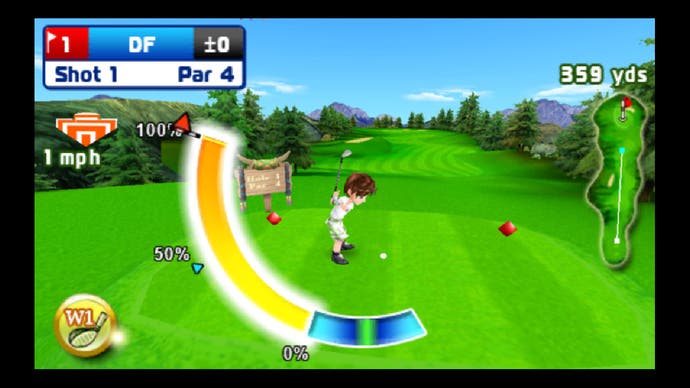PS3's PSP emulator analysed
It's a minis adventure.
PSP minis are now available to download and play on both the original target platform and PlayStation 3, an impressive feat achieved through the use of a software emulator added with the recent 3.15 version of the PS3 system software. Right now, Sony is working on full compatibility for all available minis, but a selection of them are currently available to try out now. Digital Foundry delved into its pockets and bought Heracles Chariot Racing, Echoes, Let's Golf, Stand o' Food and Breakquest for analysis.
Getting a fully-featured PSP emulator working on the PS3 is no mean feat but it is perhaps not surprising that Sony targeted the minis first: many of them are 2D and few of them really push the three-dimensional capabilities of the hardware. Based on our tests, it does very much suggest that the emulator is a work-in-progress with performance levels up against the same game running on PSP changing quite drastically according to the title you're playing.
Perhaps the first thing you notice when booting up a mini is the upscaling. While many of the open-source emulators out there like to offer the ability to run games natively in whatever resolution the user chooses, Sony's emulator stays with the original 480x272 and upscales accordingly, leaving small black border on all sides. Presumably this is the perceived "safe area" Sony has allocated to make sure that no precious game resolution slips into the overscan area of many displays.
What is very odd is the upscaling method chosen. It's very basic indeed with line-edges in particular looking rather rough. All very strange and you can't help think that even the most basic resizing algorithms available could have done a much better job than this.




Performance of the emulator itself is something of a mixed bag. Scaling issues aside, it's fair to say that there are no real issues running any of the 2D minis whatsoever. The real test of whether the emulator is up to the task is in how it handles the 3D side of the equation.
Out of the available games possessing compatibility for European PS3 owners, only Let's Golf and Heracles Chariot Racing give us a fair chance of checking this out. You don't really need slick frame-rates for a golfing game, and running on PSP Let's Golf is a fairly jerky affair with a variable update rate (mostly around 20FPS). Heracles on the other hand is a full-on 30FPS racing game that is hell-bent on maintaining its frame-rate to the point of disengaging v-sync to do so, resulting in occasional screen-tear. Let's see how these games work on the emulator, kicking off with Let's Golf.
Interestingly, the game runs at a locked 20FPS, with none of the variation of the PSP title: there's a unique frame, then two dupes with virtually no exception. Performance isn't identical but the overall experience of playing the game basically is. This is definitely not the case with Heracles Chariot Racing though.
This game is by far the most intensive workout for the emulator that we have to date, and it's fair to say that performance comes up short. What is a consistent 30FPS title on PSP often dips below 20FPS running on the PS3 emulator (sometimes drastically so, depending on the level), and it's fair to say that the overall sensation of playing the game is nowhere near as satisfying as on the original target platform. Interestingly, the PSP version can tear pretty badly, but the same code running on PS3 is v-synced. This in itself will potentially impact frame-rate, but certainly not to the degree that is often seen here.
Writing emulators is never easy, especially for relatively recent platforms and in many senses it's a miracle that Sony is able to run native code at anything approaching real-time speeds. However, it's clear that there is plenty of work to be done in getting the code up to scratch and ready for "show time" with the average, non-mini release.
You can fully expect Sony to be doing just that, based on past form. The PSone emulator built into the PSP firmware is a good indicator: just like the PSP code on show here, it's entirely software-based, and it has gradually evolved over time (though it has to be said, it was excellent from day one). So fingers crossed that these technical issues will be resolved and that the process of easily syncing game progress and high scores between console and handheld will be addressed.
For now, targeting the PSP emulation at the minis exclusively is a very smart move: it serves to put the range back into the spotlight, it'll drive some more sales based on the novelty factor, and it's a good proving ground for Sony to test its emulation code.
Longer term, once performance is more solid, you can bet that Sony will be offering full-fat PSP back catalogue games for download - perhaps when PSP2 is available, perhaps sooner. Having PSP software compatible with 30 million more devices potentially means big bucks for both platform holder, developer and publisher alike.

